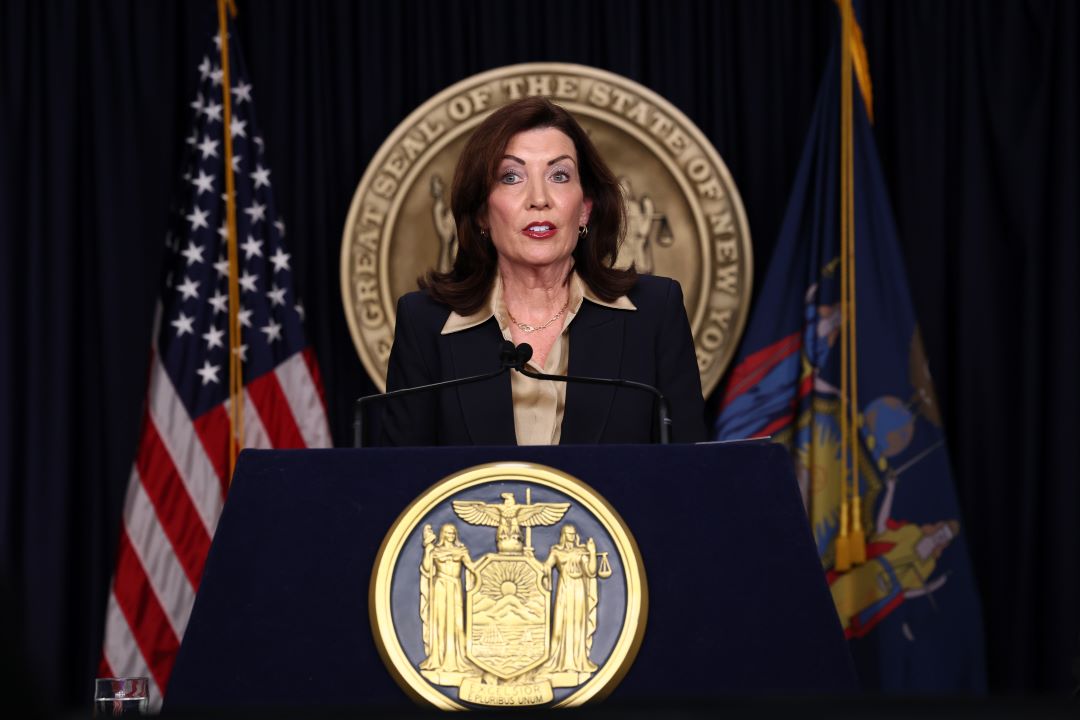Spitzer's Next Challenges: Closing The Spigot
ELIOT Spitzer campaigned last year on a promise to control state spending, promising budget savings of $11 billion to offset the cost of his new initiatives. But Spitzer's first budget is not far off the inflated baseline he inherited from former Gov. George Pataki.
The fallout on Wall Street from the sub-prime mortgage crisis, the end of the real estate boom and a general economic slowdown have all eroded revenue projections at the state and local levels. Yet growth in spending, not the sagging economy, still accounts for the bulk of the $4.3 billion state budget gap now projected for the state fiscal year that starts April 1.
Smart Policy, Straight to You
Don't miss the newsletters from MI and City Journal
As Spitzer approaches Day One of Year Two, the choices made in his first budget have compounded the difficulty of balancing his second. But his response to the gathering storm has tended to focus on the shortcomings of the budget process, rather than on the $119 billion product of his negotia- tions with the Legislature last spring.
After trading pessimistic revenue projections with the Legislature, the governor's Budget Division spent most of November and early December diverting precious time and resources to the staging of "town meetings" and public hearings around the state. The predictable result: reams of testimony from all the usual suspects, dominated by groups dedicated to the spending of more tax dollars.
So much for new ideas. Touted by the governor as a boon for transparency, the new "Quick Start" budget process has served mainly to highlight the inconsistency between New York's gloomy fiscal outlook and the governor's managerial behavior.
And, where Mayor Bloomberg has ordered city agencies to submit budget cuts for this year and next, Gov. Spitzer has merely suggested that his department heads "prepare for a difficult budget year."
The state-funded portion of the current budget was 7 percent larger than the previous year's - more than twice the inflation rate. But Spitzer insists the cost of living is the wrong benchmark for his budget - that a more appropriate measure is the long-term rate of growth in personal income, which he puts at 5.3 percent.
Even to meet that easier target, he'll need to carve at least $2.2 billion out of projected spending trends. That requires him to get serious about the three biggest budget categories:
Medicaid: This year's battle between Spitzer and the powerful health-care workers' union, Local 1199, was a skirmish compared to the nuclear war the governor will need to fight with the state's entire "health-care industrial" complex if he wants to head off a projected $1.6 billion jump in Medicaid outlays next year.
New York's state-funded Medicaid spending actually is dropping in the current fiscal year - but that reflects a temporary national trend more than anything Spitzer has done to reform the program so far.
School aid: The biggest single state-funded category of the budget is poised for another multi-year round of record increases, thanks to Spitzer's pledge to expand total school aid by $7 billion during his first term. As if to prove once again that there's no such thing as enough in the world of K-12 public education, the Board of Regents said the governor's projected $1.4 billion increase in aid should be boosted to nearly $2 billion.
The governor needs to scale back the impossibly high expectations he has created in this area-before it's too late.
State operations: The state government's payroll is well on its way to hitting the target of 3,000 added executive-branch employees called for in Spitzer's first budget. To make matters worse, the governor's recent four-year contract settlement with the largest state employee union is likely to have expensive ripple effects with other bargaining units.
OMINOUSLY, despite the revenue slowdown and added recession risk, there's little sign that anyone else in a position of real power in Albany is in a mood to control spending. For example:
* When Senate Minority Leader Malcolm Smith proposed the elimination through attrition of 4,000 "non-essential" government jobs, the idea was shot down by Senate Majority Leader Joseph Bruno.
* Just days after his staff presented a revenue estimate even more pessimistic than the governor's, Assembly Speaker Sheldon Silver pledged to fight for "additional state resources" to prevent a transit fare hike.
* To cap the year off, the governor's own task force on the future of the State University of New York has just unveiled a proposal that could entail a multi-billion dollar expansion of budget subsidies for SUNY (although the group also called for long-overdue tuition reforms that could help finance its ambitious goals).
So how will the governor respond?
Spitzer has pledged not to raise taxes-although his staff is researching a wide array of "loophole closers" that will probably stretch the definition of tax hike to the breaking point and beyond. Loopholes aside, the governor may simply try to balance next year's budget by increasing every fee in sight, resorting to reserve fund "sweeps" and other one-shots, and borrowing.
This all might be enough to tide things over for 2008, when the entire Legislature will be up for election. But it will dig a much deeper hole for an uncertain future in which Spitzer's own next date with the electorate draws nearer.
This piece originally appeared in New York Post
This piece originally appeared in New York Post


